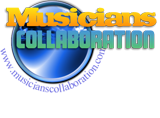What if your song is just an instrumental? Not to mention the Chord chart since there are infinite illustrations. I do know it depends on the composer's notation, but say if a piece is uploaded without the melody.
Don't get it confused with a monophonic instrument playing the melody versus a polyphonic or chordal one. (flute vs. piano) because often times the melody is also played with the latter instruments.
Therefore, you can still tell where the progressions are going within a song. This is the case with a song I'm listening to.
As I mentioned before with the composer's indication of chords: Some implore the extended variety (9ths, 11ths, 13ths - alterations included); however, performance wise, they are seen and heard as sevenths (alterations included) with the root in the bass.
A13b9b11, for example.
This chord chord on the piano, would boil down to GmMaj7b5/A. The reasons for this is people play in the root + chord position; therefore, omitting two notes.
The above chord (A13b9b11) looks like this: A, C# E, G, Bb, Db, F#
Note, how the third and eleventh are the same note harmonically. Or if the chord were a b9, the eleventh would be a natural, and though that D is an octave higher, it eould still clash with the third of that chord if the octave is displaced.
The two omitted notes would be the third and fifth. Therefore:
A, C#, E, G, Bb, Db, F# --------------> A + G, Bb, Db, F#
11ths in performance see the third omitted (A + E, G, Bb, Db = Edim7/A) while ninths take care of themselves (octave root + seventh chord), but still may be noted as such. Em9 = (GMaj7/E) Yes, I understand the difference between extended and slash chords, but performance wise, the slash variety are very prevalent substituted for their extended versions.
So, again, it comes down to the performer understanding scales.
And let's not forget to mention inversions which encompass figured bass. Anything past a seventh (alterations included), still looks like a seventh. As this complicates things further, it'd be easier to omit the respective notes in 11ths and 13ths and look at them as inverted sevenths.
Em9 4th inversion = F#, G, B, D, (E); outside the parentheses, sits a GMaj7 (4/2) chord.
Em11 5th inversion = G, B, D, F#, A, (E). Here we have a GMaj9 and Bm7 outside the parentheses
Em13 sixth inversion = B, D, F#, A, C# (E, G) Here, we have GMaj11, Bm9 and DMaj7 chords respectively.
Given those examples, it'd be tremendously easier on the performer to see the latter chords unless the performer knows what the extended chords look like therefore adjusting accordingly.
